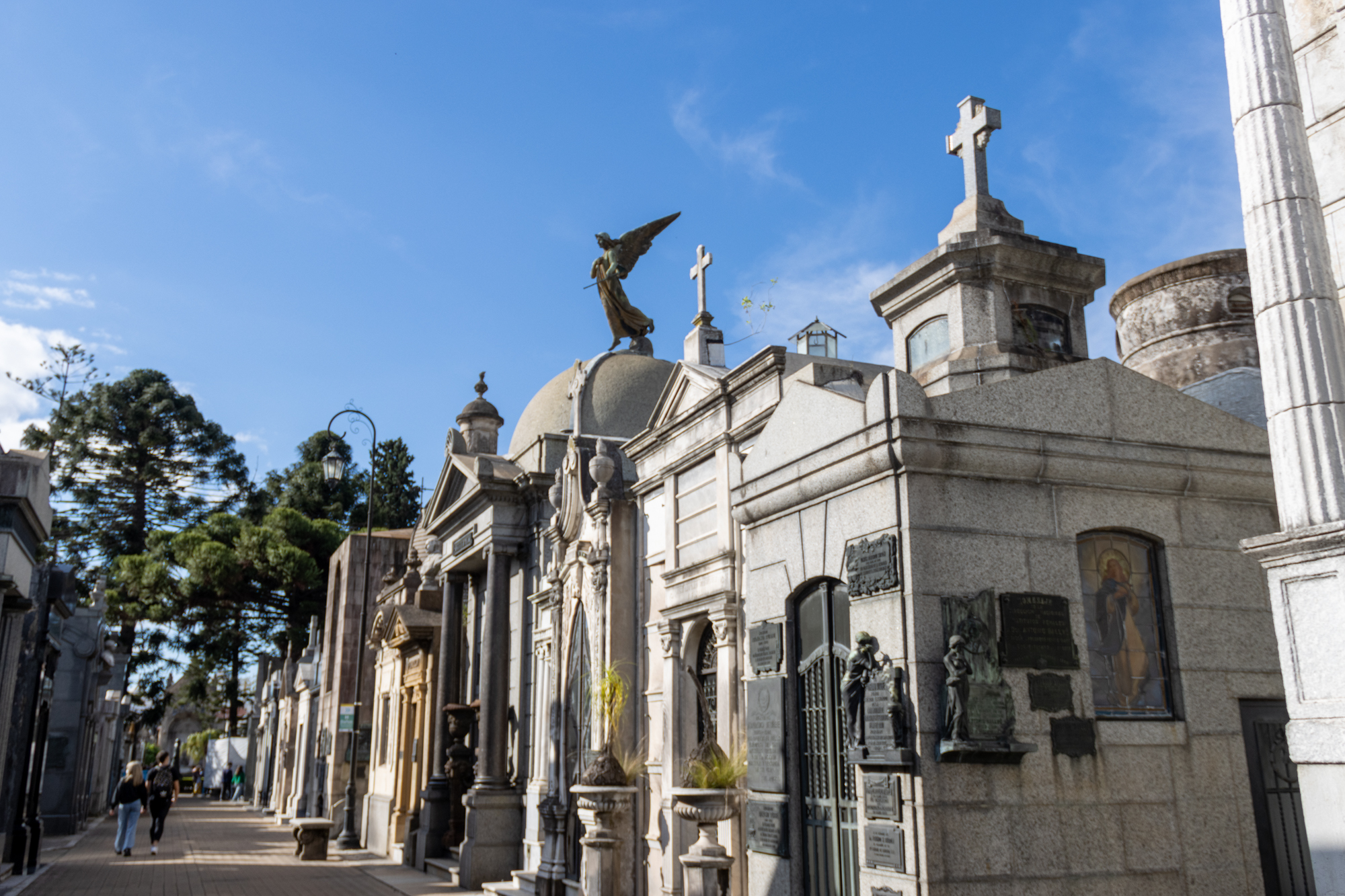Written and photographed by Samantha Demangate
Cemeteries tend to conjure an assortment of distinct images for people. While one person might think of a peaceful place of rest, another might think of a haunted, spooky area that they wouldn’t be caught dead in at night. Generally, cemeteries aren’t a place to pay a visit, unless you know the dearly departed residing there. But, Recoleta Cemetery handles things a little differently (spookiness still included…maybe. You decide.)
The Recoleta Cemetery of Buenos Aires, Argentina, is unlike any other cemetery. With avenues and addresses, the cemetery operates like its own city. It is impossible to miss, smack in the middle of Recoleta, surrounded by high brick walls. Dripping with opulence, you will successfully transport yourself to a world of Argentine history once you enter the gates.



Appearances Appearances Appearances
The most affluent of individuals and families in Buenos Aires are able to purchase a plot in the cemetery. With burial real estate at a high price, it is costly to lay at rest in the city of the dead. There are over 4,700 tombs containing the remains of over 350,000 people with new residents joining to this day.
Sporting a diverse but lavish appearance, Recoleta Cemetery contains structures of Art nouveau, Neoclassical and Neo-Gothic styles…(and many more). This amalgamation of architecture only contributes to the larger-than-life quality that the cemetery possesses.



The Recoleta Cemetery of Buenos Aires is a National Heritage site, containing 90 plus tombs that themselves are national historic monuments. It is home to an assortment of famous Argentines, including but not limited to past presidents, prominent writers, priests, actors, philanthropists, soldiers and physicians.
Prominent Residence
Amongst the most prominent people residing in the place of peace are: Adolfo Bioy Casares, a prominent author and journalist, Victoria Ocampo, a writer and distinguished woman, and William Brown, an Argentine admiral born in Ireland. That’s just to name a few, all with complex and important stories that contribute to Argentine history.
Of course, we cannot forget Eva Duarte de Perón, also known as Evita. Her journey to the Recoleta cemetery is a complicated, if not outlandish, one.

Next store to the Recoleta Cemetery sits the church, Our Lady of Pilar (the second oldest church in Buenos Aires) and the Recollect Convent. Built in 1732 by the Spanish Fransiscan monks known as the Recoletos, the two buildings sat alone, the now cemetery being only a garden at that time. The garden was converted into the first public cemetery of Buenos Aires in 1822. This occurred only after the order of the Recoletos was dissolved.
The cemetery grew in size, and the iconic mausoleums were constructed. Some of the original tombs are still there today, making some of them 200 years old.
The oldest mausoleum, built in 1823, belongs to the Bustillo family. Read more about it here! The title of the oldest tomb is difficult to determine and is still debated.



Mausoleums and Tombs
Argentine families are the owners of mausoleums and tombs. The living members must fund the upkeep and maintenance. That said, some of the deceased no longer have any living descendents, so it is common to see disheveled tombs. In the more depleted areas, even some coffins are visible.
Larger tombs have stairs that lead to a lower level crypt. Many contain 20 or more family members. Burying generations of one family together is a common practice. The tomb itself may have a hearth, table or other area in which framed photos, sculptures of the family members or mementos stand on display.
In recent years, people have built individual stacked spaces to store one coffin or several urns in an effort to maximize the space of the cemetery.


The Recoleta Cemetery is essentially an open air museum, and is one of the most visited landmarks of Buenos Aires, Argentina. Step inside the city of the dead, and immerse yourself in a piece of Argentine history.
Did you enjoy this article? Try another! Learn about the The Cacao of Mesoamerica and the Chocolate of Today

